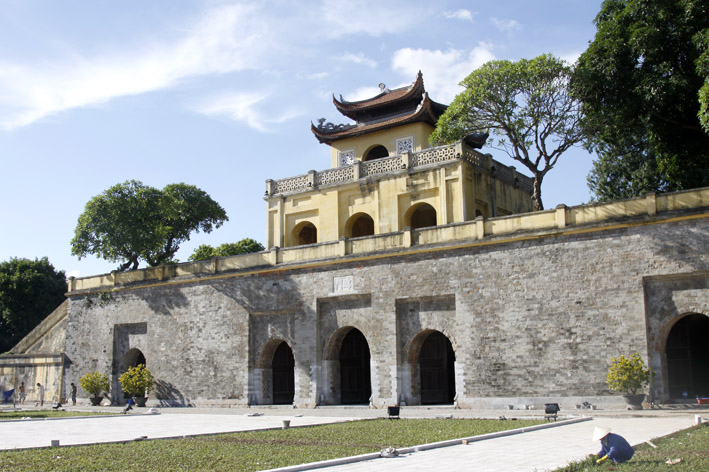The Thang Long Imperial Citadel was built in the 11th century by the Ly Viet Dynasty, marking the independence of the Dai Viet. It was constructed on the remains of a Chinese fortress dating from the 7th century, on drained land reclaimed from the Red River Delta in Hanoi. It was the centre of regional political power for almost 13 centuries without interruption. The Imperial Citadel buildings and the remains in the 18 Hoang Dieu Archaeological Site reflect a unique South-East Asian culture specific to the lower Red River Valley, at the crossroads between influences coming from China in the north and the ancient Kingdom of Champa in the south.

The ancient site was the political centre of the country for 13 consecutive centuries and served as the capital of Vietnam for eight centuries.
Imperial Citadel of Thang Long
The central sector of the imperial citadel includes relics in Hanoi Citadels and an interesting archaeological area at 18 Hoang Dieu Street. Excavation work took place from 2002 to 2004 at the Thang Long Royal Citadel site and as a result many artifacts and items from the 6th to the 20th century belonging to the Ly, Nguyen, Tran, Le eras were found.
Foundations of old palaces, relics, ancient roads, ponds and wells were discovered and as a result the famous Hanoi Flag Tower on Dien Bien Phu Street in Ba Dinh District, a renovated old stone fortress, is popular with visitors. On top of these discoveries, archaeologists also found bronze coins, ceramics and pottery from China and many places in Asia, all of which demonstrate a close trading relationship in the area. Visitors should head for the display room that features interesting excavated items as well as mockups of the citadel itself.
Location: Next to Ba Dinh Square, opposite the Ho Chi Minh mausoleum and also near many important political buildings including the Vietnamese Presidential Palace.
EmoticonEmoticon